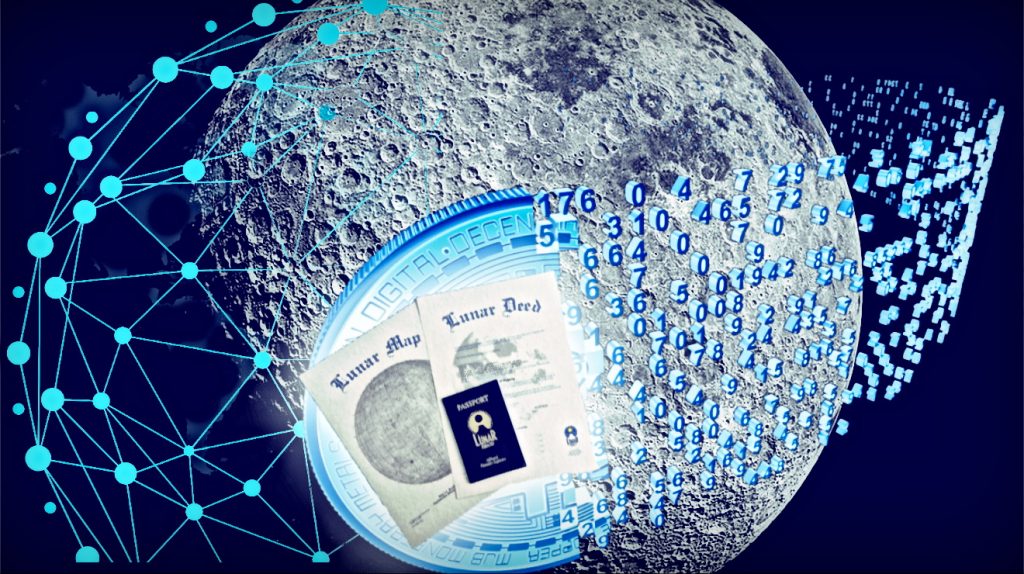A Moon Blockchain Project

A Blockchain Project that set out to Tokenize and Apportions the Moon. A recent blockchain project has set up and registered a project that would divide and tokenize section of the lunar surface.
The project is named Diana, which after the Roman goddess of the Moon and the hunt. The given project that launched on 19th July, just a day before the 50th anniversary of the well-known Apollo moon landing. The aim of this project was intended to procure the possible right of mankind to own the Moon, and proffering a relevant solution to the frequently asked question of who owns the Moon.
It was taken into account that a lunar registry secured access to the moon as it is becoming more likely that governments will exploit space for its wealth of resources:
“The Diana project goal is to determine the possible rights of man to the Moon clearly. This is necessary due to the increased ownership disputes over time, and this can be achieved through collective registration.”
As noted in the project’s white paper of Article II of the United Nations Outer Space Treaty: Outer space, comprising the Moon and other celestial bodies, is not subject to government appropriation through a claim of sovereignty, use or occupation, or by any other means.
The white paper stated clearly that the treaty does not recognize private ownership of the moon, which could permit for the exploitation of the celestial body. By segregating and tokenizing the moon into 3.8 billion sections, the Diana project would hedge against the private ownership and hypothetical exploitation of the moon’s resources by criminal or selfish individuals.

Diana lists outlined the biz model for Moon ownership on the project’s roadmap.
The registry will function with two ERC-20 standard tokens: The DIA tokens will serve as an indivisible proof of registration of a cell of the moon’s section and the MOND tokens will serve as transaction tokens supported by 1:1 of the United States dollar.
Well-known national space agencies such as the United States National Aeronautics and Space Administration and their counterparts the European Space Agency are researching the best means to apply blockchain technology to their operations.
![]()